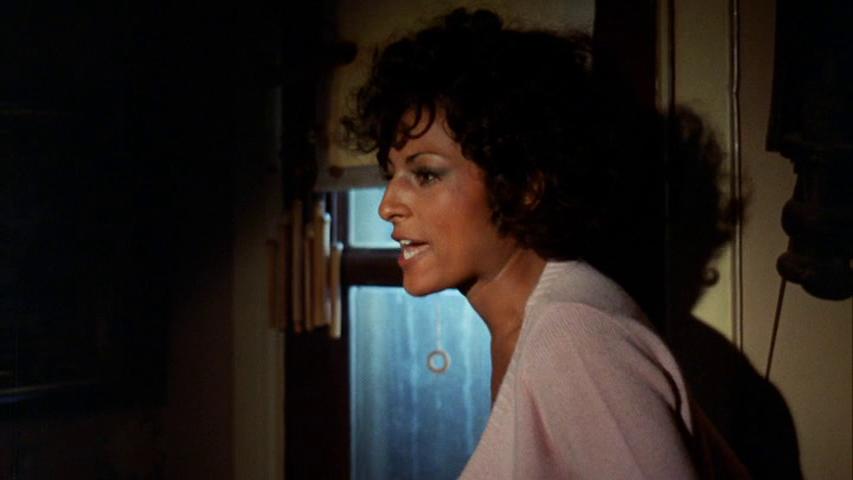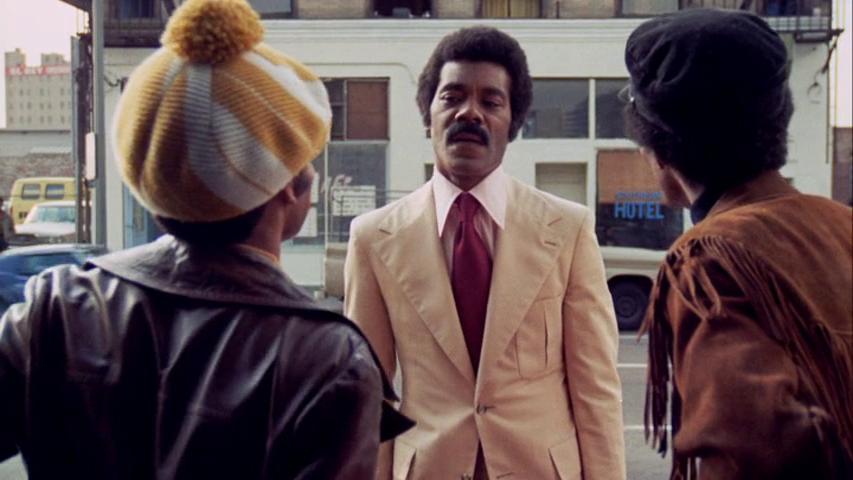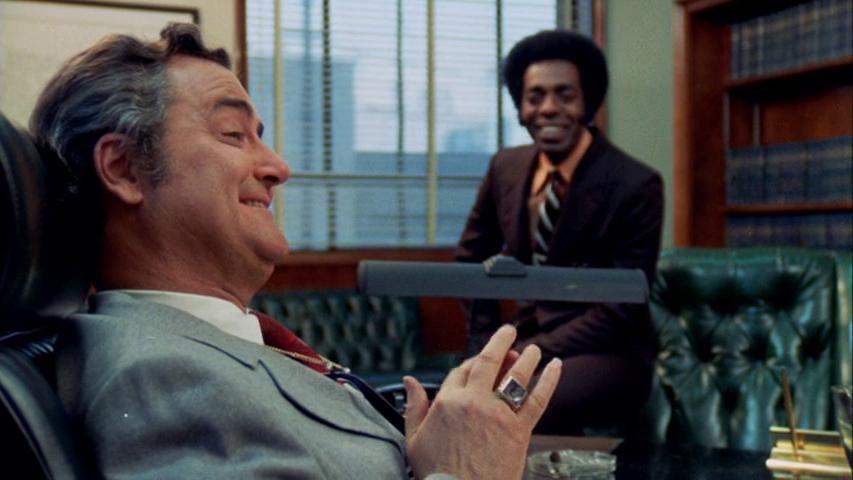Director: Barry Pollack
Writer: Barry Pollack, based on a novel by W. R. Burnett
Stars: Thalmus Rasulala, Judy Pace, Jim Watkins, Lincoln Kilpatrick and Raymond St. Jacques
 |
Index: The First Thirty.
While Cool Breeze was written by its director, Barry Pollack, there’s an early credit to say it’s based on a novel by W. R. Burnett. Strangely, it isn’t interested in saying which novel, because it’s The Asphalt Jungle, famously filmed in 1950 with Sterling Hayden and Louis Calhern, with The Badlanders in 1958 retelling the story as a western and Cairo in 1963 taking it to Egypt.
This, in case you weren’t able to guess from the poster, is a blaxploitation movie, so it’s an inner city look at how the American black man is ripped off by Whitey and it only seems fair to rip him off in return, to the tune of $3m in diamonds. Oddly, the city is Los Angeles rather than New York, but everything else applies.
Opening credits highlight that it’s an MGM picture, trying to stay relevant with the black audience after their huge success with Shaft a year earlier; it was produced by Gene Corman, who was Roger’s older brother; and it features the work of Solomon Burke on the soundtrack.
It also tells us that Pam Grier, who’s listed as Pamela Grier, isn’t one of the stars but is one of four co-stars, suggesting that she’s going to get a heck of a lot more screen time than she actually does. In truth, the only co-star with a real part is Sam Laws as “Stretch” Finian, who plays a big role in the developing crime and a bigger one in how it all falls apart.
What’s particularly telling is that the other three of those co-stars, the ones without a lot of screen time, are all female. Women simply don’t have much of a place in this picture and what place they have is decidedly subsidiary. It seems like women in this world are hookers or mistresses, maybe wives to ignore, but not anything of real consequence.
 |
It may be cynical but it seems like Judy Pace landed a star credit not because she had a role of substance but because she’d been in a real blaxploitation pioneer, Cotton Comes to Harlem in 1968. The others probably got their co-star credits for showing their boobs.
This is a man’s world, it seems, and it would be nothing without Sidney Lord Jones, a crook with serious style who starts the film in a cell in San Quentin reading up on his next job. He’s quickly released and he practically dances his way out of there, man. He’s played by Thalmus Rasulala who was very much on the rise, with this his second big screen credit and his first starring role. He’d follow it up by playing the villain in Blacula later the same year.
Jones seems to transcend his enviroment, a black man who believes with every pore of his being that he’s important and the world must bend to his will. By comparison, Travis Battle is firmly stuck in his environment, a good man who served honourably in Vietnam but owes a couple of thousand to an illegal bookie and starts the film being chased by the cops for no better reason than he walked round a corner. He’s played by Julian Christopher, going by Jim Watkins, and it’s his film debut. He does an impressive job, reminding of a young Denzel Washington. He went on to quite a career but he never became the star he could have been.
If you remember The Asphalt Jungle, you’ll be waiting for the jewel heist but you need to be patient. We will get there, roughly halfway in, but the script has Jones build everything from the ground up first. The first half is all about putting the job together. The job itself is over pretty quickly, leaving most of the second half taken up with how it all goes horribly wrong.
 |
The key players are Jones, the mastermind, who’s figured out how the whole job’s going to work before the opening credits are over, but needs a crew, fifty grand up front to pay them and a way to handle the proceeds afterwards; Finian, his gateway to a financier, because of his standing in L.A.’s criminal underworld; and Bill Mercer, the rich black man who agrees to pony up the dough to make the job a go.
They’re an interesting trio, because they’re very different. Jones is going places and knows it. Mercer is already there, except everything’s a front because he’s really broke. And Finian’s the one getting his hands dirty every day but won’t ever be anything but a middleman. He’s very aware of his place and he’s wary indeed of stepping beyond it.
Battle, of course, ends up as one of the crew and he sees this one job as a way to get out of “Whitey’s jungle”. He wants to pay off his debt and get out of the city, where he can enjoy the open air and not have to deal with the Man.
It has to be said that the Man is everywhere here even though he rarely bothers to actually show up. The Man is mostly distilled into one racist white character, Lloyd Harmon, who is a police captain in the LAPD. The best scenes to address racial inequity here unfold between him, in the form of a smarmy Stewart Bradley, and his token black officer, Lt. Brian Knowles, portrayed magnificently by Lincoln Kilpatrick, who knows exactly how to work him.
 |
Other crew members include Battle’s half-brother John—“same nag, different jockey”—and a safecracker and priest, Rev. Roy Harris, which is an interesting touch. There are many interesting touches here, but I’m not going to run through all the many good lines, moments and scenes, because they’ll suggest that this is a far better film than it actually is.
In the end, it’s a decent movie, I guess, but it never seems quite right even when it’s doing something impressive. It’s like Barry Pollack, a debuting director, didn’t really understand it, even though he adapted the source novel into a script himself. Critic Roger Greenspan called that out in his New York Times review, as well as pointing out that the cast and the story are black but the crew was not, including Pollack, and that may be the most important factor.
You’ll have noticed that absolutely nothing I’ve said involves a single woman, so you may be wondering when Pam Grier shows up. She’s a hooker here and she only gets a single scene broken into two. It’s a lot more than she got in Beyond the Valley of the Dolls, especially as there are lines for her, but it’s a lot less than her co-star credit hinted at. She’s on screen for about two minutes, selected to satisfy Jones and she isn’t happy that he doesn’t pay her afterwards.
The first half is darkly lit but she’s instantly recognisable because of the shape of her nose and, well, she’s far better endowed than the other girls in the picture. The second half is better lit, but she’s quickly out of there.
So, back to the Philippines she went.



No comments:
Post a Comment